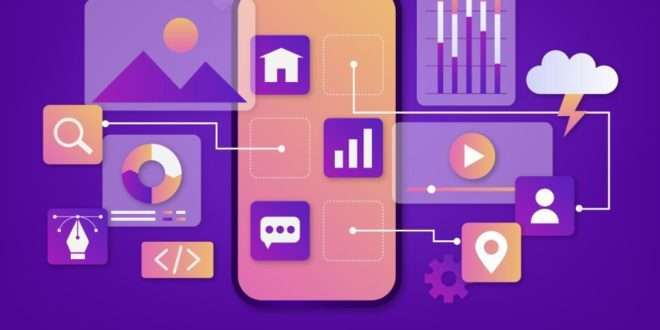Welcome to a deep dive into the world of Offline-First Progressive Web Apps (PWAs). In this comprehensive guide, we’ll explore how PWAs are revolutionizing the way we interact with web applications, particularly in offline scenarios. By leveraging the power of modern web technologies, PWAs are transforming the user experience and bridging the gap between web and native apps. So, let’s embark on this exciting journey to uncover the true potential of Offline-First PWAs and the seamless offline experiences they bring.
Understanding Progressive Web Apps (PWAs)
Before we dive into the offline capabilities of PWAs, let’s quickly grasp the essence of what makes them unique. PWAs are web applications that combine the best of both worlds: the reach and accessibility of the web and the performance and features of native apps. They load instantly, offer a responsive layout across devices, and provide an immersive user experience.
Embracing the Offline-First Approach
One of the most remarkable features of PWAs is their ability to function seamlessly even in offline or low-network conditions. Traditional web applications often falter when users lose connectivity, leading to frustration and lost opportunities. However, Offline-First PWAs are designed to prioritize offline functionality, ensuring users can continue to interact with the app even without an internet connection.
The Anatomy of Offline-First PWAs
To enable offline capabilities, PWAs employ several key technologies and strategies:
- Service Workers: These scriptable network proxies enable background caching and handle network requests, allowing PWAs to load quickly and function offline.
- Caching Strategies: Offline-First PWAs use smart caching strategies to store essential assets locally, reducing reliance on server connections.
- IndexedDB: This client-side database allows PWAs to store large amounts of data offline and sync it with the server when online.
- Web App Manifest: This JSON file specifies essential metadata about the PWA, such as the app’s name, icons, and display preferences.
Unleashing Seamless Offline Experiences
Now that we understand the technology behind Offline-First PWAs, let’s explore how this approach benefits users and businesses alike:
Instant Loading and Better Performance
Offline-First PWAs load instantly, even on flaky networks, thanks to service workers and caching strategies. Users no longer face frustrating loading times and can enjoy a smooth experience.
Enhanced User Engagement
With seamless offline access, users can engage with the PWA regardless of their network status. This continuous engagement can boost user retention and drive more conversions.
Cost-Effectiveness
By reducing server requests and minimizing data usage, PWAs can lead to significant cost savings for businesses and users alike.
Increased Accessibility
Offline-First PWAs cater to users in regions with limited internet connectivity, expanding the app’s reach to a broader audience.
Overcoming Challenges
While Offline-First PWAs offer tremendous benefits, there are some challenges to consider:
Data Synchronization
Ensuring data consistency between the local PWA and the server when the user comes back online requires careful handling to prevent data conflicts.
Storage Limitations
IndexedDB, while powerful, has storage limitations that developers must consider when designing the app.
PWA Tutorial: Building an Offline-First PWA
Now that we’ve explored the advantages and challenges of Offline-First PWAs, let’s embark on a step-by-step tutorial to build one ourselves:
Setting Up a Basic PWA
Begin by creating a simple PWA with HTML, CSS, and JavaScript, and add a service worker to cache essential assets.
Implementing Offline Functionality
Utilize the service worker to handle offline requests and serve cached content, ensuring the PWA remains functional offline.
Adding IndexedDB Support
Incorporate IndexedDB to store critical data locally and synchronize it with the server when a network connection is available.
Fine-Tuning the User Experience
Optimize the PWA’s design and layout for various devices, ensuring a consistent and pleasant user experience.
PWA Website Examples: Real-World Success Stories
Let’s draw inspiration from some well-known PWA implementations:
Twitter Lite
Twitter Lite, a lightweight PWA, loads quickly and provides a similar experience to its native app, even on slow networks.
Pinterest’s PWA offers a visually rich experience with quick load times, keeping users engaged even when offline.
Starbucks
Starbucks’ PWA enables customers to order and pay offline, enhancing convenience and improving customer satisfaction.
Final Words
Offline-First PWAs have emerged as a game-changer, elevating the web app experience to new heights. By prioritizing offline functionality and seamless user interactions, they bridge the gap between the web and native apps. Embrace the potential of Offline-First PWAs, and witness the transformative power they bring to your web applications.
Commonly Asked Questions
Q1: Are PWAs compatible with all devices and browsers?
Yes, PWAs are designed to be compatible with a wide range of devices and modern web browsers, ensuring a consistent experience for users.
Q2: Can Offline-First PWAs work on iOS devices?
While iOS devices support PWAs, some limitations exist due to Apple’s browser engine. However, PWAs can still provide significant offline functionality on iOS.
Q3: How do Offline-First PWAs handle data synchronization conflicts?
Developers implement various conflict resolution strategies, such as using timestamps or server-side conflict detection, to handle data synchronization challenges.
Q4: Can I implement push notifications in an Offline-First PWA?
Absolutely! Offline-First PWAs can leverage push notifications to engage users even when the app is not open.
Q5: How do PWAs impact SEO rankings?
Offline-First PWAs with improved user experience, fast loading times, and mobile responsiveness can positively impact SEO rankings by enhancing user engagement and reducing bounce rates.
 webfily
webfily



